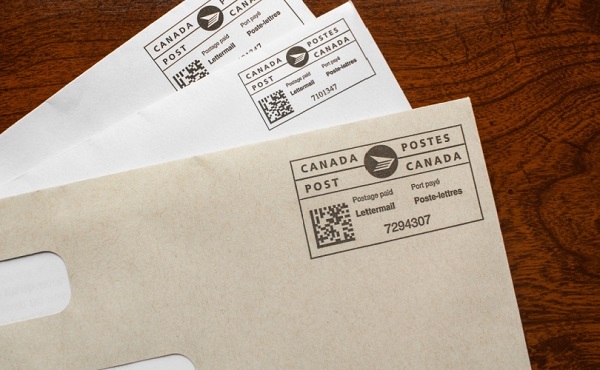Energy
Enbridge punches back on Line 5 challenge: ‘Nothing but counter-factual speculation’
This photo taken in October 2016 shows an aboveground section of Enbridge’s Line 5 at the Mackinaw City, Mich., pump station. The Bad River Band of the Lake Superior Chippewa wants a federal judge in Wisconsin to order the pipeline closed, fearing a rupture on its territory due to spring flooding. THE CANADIAN PRESS/AP-John Flesher
By James McCarten in Washington
Michigan joined the Line 5 legal fray unfolding just across state lines Wednesday as lawyers for Enbridge Inc. and an Indigenous band prepared to square off over whether the controversial cross-border pipeline should be shut down.
The stage is set for oral arguments Thursday in the Wisconsin capital of Madison as a federal judge contemplates whether to order the taps turned off and the pipeline’s contents purged to forestall a watershed-fouling rupture.
That hearing will now also include lawyers fighting a similar legal battle with Enbridge in Michigan, where Attorney General Dana Nessel has so far been thwarted in her three-year campaign to seal off Line 5 for good.
The Bad River Band of the Lake Superior Chippewa, through whose northern Wisconsin territory the line runs, has filed a motion arguing that spring flooding along the riverbanks has rendered the risk of a breach too great to ignore.
Nonsense, Enbridge argues back in an opposition brief that takes direct aim at the band’s claims of a looming environmental emergency, as well as the “drastic remedy” its lawyers are requesting.
“Despite having to prove both liability and grounds for an injunction, the band has done neither. The motion must therefore be denied,” the brief reads, describing their argument as “alarmist” and “counterfactual speculation.”
“No release of oil is ‘ready to take place,’ ‘happening soon,’ or ‘real and immediate.'”
The 50-page filing includes among its exhibits an email exchange between Enbridge and the band’s natural resources officials to support its argument that the band has been unwilling to allow the company to do any remedial work.
“This court should contrast the evidence before it of Enbridge’s persistent efforts and overtures to reach a solution … with the band’s refusal to meaningfully engage or act.”
Even if the risk was high, shutting down the pipeline would not be the appropriate remedy, Enbridge says, pointing to a court-ordered contingency plan that spells out the steps it would take if the threat were indeed urgent.
“Enbridge will pre-emptively purge and shut down the line well in advance of any potential rupture,” the brief says, adding that the area remains under constant 24-hour video surveillance.
“Any flooding and erosion has not, and would not, catch Enbridge by surprise.”
Heavy flooding that began in early April washed away significant portions of the riverbank where Line 5 intersects the Bad River, a meandering, 120-kilometre course that feeds Lake Superior and a complex network of ecologically delicate wetlands.
The band has been in court with Enbridge since 2019 in an effort to compel the pipeline’s owner and operator to reroute Line 5 around its traditional territory — something the company has already agreed to do.
But the flooding has turned a theoretical risk into a very real one, the band argues, and it wants the pipeline closed off immediately to prevent catastrophe.
Line 5 meets the river just past a location the court has come to know as the “meander,” where the riverbed snakes back and forth multiple times, separated from itself only by several metres of forest and the pipeline itself.
At four locations, the river was less than 4.6 metres from the pipeline — just 3.4 metres in one particular spot — and the erosion has only continued.
Michigan, led by Nessel, has been arguing since 2019 that it’s only a matter of time before Line 5 leaks into the Straits of Mackinac, the ecologically delicate waterway where it crosses the Great Lakes.
“The alarming erosion at the Bad River meander poses an imminent threat of irreparable harm to Lake Superior which far outweighs the risk of impacts associated with a shutdown of the Line 5 pipeline,” she argues in her brief.
“Without judicial intervention, it is likely that this irreparable harm will be inflicted not only on the band, but also on Michigan, its residents, and its natural resources.”
The economic arguments against shutting down the pipeline — which carries 540,000 barrels of oil and natural gas liquids daily across Wisconsin and Michigan to refineries in Sarnia, Ont. — are by now well-known.
Its proponents, including the federal government, say a shutdown would cause major economic disruption across Alberta, Saskatchewan and the U.S. Midwest, where Line 5 provides feedstock to refineries in Michigan, Ohio and Pennsylvania.
It also supplies key refineries in Ontario and Quebec, and is vital to the production of jet fuel for major airports on both sides of the Canada-U.S. border, including Detroit Metropolitan and Pearson International in Toronto.
“The implications (of a shutdown) are significant — not only to Pearson airport, not only to the Detroit airport, but to our mutual economies,” Transport Minister Omar Alghabra said Wednesday on Parliament Hill.
Talks about possible contingency plans have been taking place, he added, though he hinted at something Enbridge and pipeline experts have been saying for years: there are no real alternatives.
“There’s been ongoing discussion,” Alghabra said. “But I can tell you that our focus is making sure that Line 5 continues operations.”
That was the idea behind a lengthy statement issued Tuesday by the Canadian Embassy, which warned of severe economic consequences as well as potential ramifications for bilateral relations were the line to close.
“The energy security of both Canada and the United States would be directly impacted by a Line 5 closure,” the statement said. Some 33,000 U.S. jobs and US$20 billion in economic activity would be at stake, it added.
“At a time of heightened concern over energy security and supply, including during the energy transition, maintaining and protecting existing infrastructure should be a top priority.”
Talks have been ongoing for months under the terms of a 1977 pipelines treaty between the two countries that effectively prohibits either country from unilaterally closing off the flow of hydrocarbons.
Nonetheless, the embassy’s statement and the Enbridge brief tacitly acknowledge that the prospect of a shutdown order is very real.
In Enbridge’s case, the brief pre-emptively asks the judge to grant a stay of 30 days, should an injunction be ordered, to give lawyers time to mount an appeal.
And if “this specific, temporary flood situation” results in a shutdown, the embassy says, Canada expects the U.S. to comply with the treaty, “including the expeditious restoration of normal pipeline operations.”
This report by The Canadian Press was first published May 17, 2023.
Business
Carney’s Honeymoon Phase Enters a ‘Make-or-Break’ Week
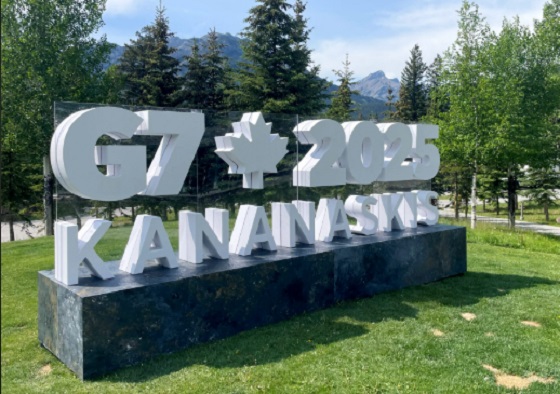
From the National Citizens Coalition
The National Citizens Coalition (NCC) is sounding the alarm on a critical week for the Carney government, which, despite enjoying an unearned honeymoon in the polls, has delivered zero results for everyday Canadians. As the G7 summit looms large and the House of Commons prepares to adjourn, this is a make-or-break moment for Prime Minister Mark Carney to prove his government is more than empty promises. Canadians are watching, and the NCC is calling out the glaring failures that threaten a grim summer of economic decline, and continued crime, chaos, and rising unemployment.
Housing Minister Gregor Robertson Caught in $10.85 Million Scandal
Recent revelations from Blacklock’s Reporter expose Housing Minister Gregor Robertson’s attempt to conceal $10.85 million in personal property investments during Commons questioning. This shocking lack of transparency from the minister tasked with addressing Canada’s housing crisis raises serious questions about his integrity and ability to prioritize Canadians struggling with skyrocketing costs. While Robertson dodges accountability, and Carney apparently scoffs at providing housing relief to millions suffering under a Liberal-made crisis, young professionals and young families are wondering if they’ll ever have a chance to own a home bigger than Canada’s much-maligned supply of ‘dog-crate condos.’
The NCC demands a full ethics investigation, the resignation of Gregor Robertson — who, as one of the architects of the Vancouver housing crisis, should have never been handed this file to begin with — and immediate action to restore trust in this critical portfolio.
Pipeline Delays and Provincial Obstruction Threaten Economic Growth
The Carney government’s inaction on pipelines is stalling Canada’s economic potential. Despite promises of “nation-building projects,” British Columbia and Quebec continue to block and veto critical energy infrastructure, with Carney failing to assert federal leadership. His vague talk of “consensus” and “decarbonized” barrels has led to zero progress, leaving Alberta’s economy in limbo and Canadians facing higher energy costs. With no clear plan to advance projects, the government is squandering opportunities to create jobs and secure energy sovereignty. The NCC urges Carney to act decisively this week to break the provincial logjam and deliver results.
Immigration Chaos: Lena Diab’s Unchecked Honour System Fails Canadians
Immigration Minister Lena Diab’s reliance on an ‘honour system’ for millions of temporary visitors with expiring visas is a recipe for disaster. As Canada grapples with unsustainable immigration levels, Diab’s apparent plan for millions of temporary workers and failed ‘diploma mill’ attendees assumes compliance without enforcement, ignoring the high-propensity for fraud, and the ongoing and urgent strain on housing, healthcare, and public services. The Liberals’ Strong Borders Act promises reform, but its loaded with unnecessary overreach and vague measures.
A lack of urgency leaves Canadians vulnerable to further crime, chaos, closed emergency rooms, high rents, and failing infrastructure. With immigration continuing to spiral out of control, the NCC calls for concrete action to drastically lower immigration targets, expedite deportations, and prioritize Canadian citizens and the record amounts of unemployed before the House adjourns.
Canadians Deserve Results, Not More Hollow “Elbows up” or “Team Canada” Rhetoric
This week’s G7 summit in Alberta and the impending House adjournment are the Carney government’s last chance to show leadership, before an undeserved summer break for a government that will be overseeing deepening economic decline, rising crime under a refusal to tackle catch-and-release bail, and growing unemployment. Canadians cannot afford another season of unfulfilled promises and unchecked crises. The NCC demands Carney use the G7 platform to secure trade stability, meaningful energy deals with our allies, and table a federal budget to address the cost-of-living crisis made worse by inflationary Liberal spending. Failure to act now will cement an early legacy of inaction and leave Canadians to endure a prolonged period of hardship.
“The Carney government’s honeymoon has been built on hype, not results,” says NCC Director Alexander Brown. “From Gregor Robertson’s hidden millions, to stalled pipelines, to an immigration system in continued disarray, Canadians — and particularly young Canadians — are being let down. This week is Carney’s chance to prove he can deliver beyond the lies that were told to placate a portion of the electorate at the polls. If he fails to act, the economic decline, the crime and chaos, will only worsen, and everyday Canadians will pay the price.
“True Canadian leaders like Alberta Premier Danielle Smith are in attendance at the G7 along with Carney. If actual acts of ‘nation-building,’ and not more net-zero de-growth, do not come naturally to the PM, he should turn to those who have never wavered in their quest to make life more affordable for the hard-working citizens they are privileged to represent, and who know when to get out of the way to allow Canadians to prosper. More of the same internal, ideological sabotage from the Liberals cannot ruin this dire moment for Canada’s rebirth and recovery.”
The NCC calls on all Canadians to hold the Carney government accountable. Join us in demanding transparency, action, and results before the House adjourns and the G7 summit concludes. Together, we can fight for a stronger, more prosperous Canada.
About the National Citizens Coalition: Founded in 1967, the NCC is a non-profit organization dedicated to advocating for individual freedom, lower taxes, less government waste, and a stronger Canada. We hold governments accountable and fight for the interests of everyday Canadians.
Energy
Kananaskis G7 meeting the right setting for U.S. and Canada to reassert energy ties
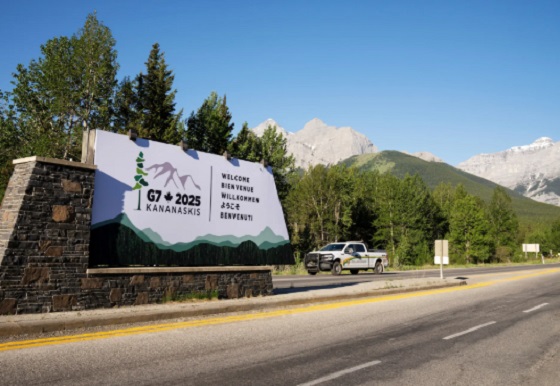

Energy security, resilience and affordability have long been protected by a continentally integrated energy sector.
The G7 summit in Kananaskis, Alberta, offers a key platform to reassert how North American energy cooperation has made the U.S. and Canada stronger, according to a joint statement from The Heritage Foundation, the foremost American conservative think tank, and MEI, a pan-Canadian research and educational policy organization.
“Energy cooperation between Canada, Mexico and the United States is vital for the Western World’s energy security,” says Diana Furchtgott-Roth, director of the Center for Energy, Climate and Environment and the Herbert and Joyce Morgan Fellow at the Heritage Foundation, and one of America’s most prominent energy experts. “Both President Trump and Prime Minister Carney share energy as a key priority for their respective administrations.
She added, “The G7 should embrace energy abundance by cooperating and committing to a rapid expansion of energy infrastructure. Members should commit to streamlined permitting, including a one-stop shop permitting and environmental review process, to unleash the capital investment necessary to make energy abundance a reality.”
North America’s energy industry is continentally integrated, benefitting from a blend of U.S. light crude oil and Mexican and Canadian heavy crude oil that keeps the continent’s refineries running smoothly.
Each day, Canada exports 2.8 million barrels of oil to the United States.
These get refined into gasoline, diesel and other higher value-added products that furnish the U.S. market with reliable and affordable energy, as well as exported to other countries, including some 780,000 barrels per day of finished products that get exported to Canada and 1.08 million barrels per day to Mexico.
A similar situation occurs with natural gas, where Canada ships 8.7 billion cubic feet of natural gas per day to the United States through a continental network of pipelines.
This gets consumed by U.S. households, as well as transformed into liquefied natural gas products, of which the United States exports 11.5 billion cubic feet per day, mostly from ports in Louisiana, Texas and Maryland.
“The abundance and complementarity of Canada and the United States’ energy resources have made both nations more prosperous and more secure in their supply,” says Daniel Dufort, president and CEO of the MEI. “Both countries stand to reduce dependence on Chinese and Russian energy by expanding their pipeline networks – the United States to the East and Canada to the West – to supply their European and Asian allies in an increasingly turbulent world.”
Under this scenario, Europe would buy more high-value light oil from the U.S., whose domestic needs would be back-stopped by lower-priced heavy oil imports from Canada, whereas Asia would consume more LNG from Canada, diminishing China and Russia’s economic and strategic leverage over it.
* * *
The MEI is an independent public policy think tank with offices in Montreal, Ottawa, and Calgary. Through its publications, media appearances, and advisory services to policymakers, the MEI stimulates public policy debate and reforms based on sound economics and entrepreneurship.
As the nation’s largest, most broadly supported conservative research and educational institution, The Heritage Foundation has been leading the American conservative movement since our founding in 1973. The Heritage Foundation reaches more than 10 million members, advocates, and concerned Americans every day with information on critical issues facing America.
-

 Business2 days ago
Business2 days agoEU investigates major pornographic site over failure to protect children
-
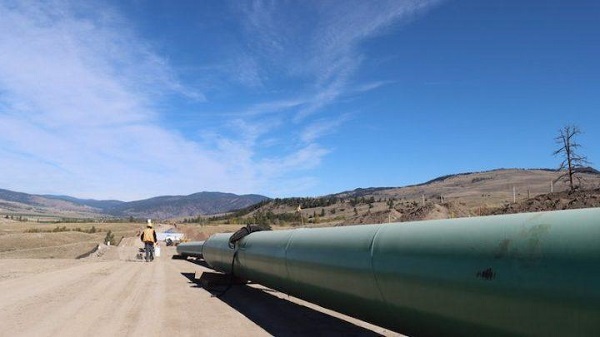
 Canadian Energy Centre2 days ago
Canadian Energy Centre2 days agoCross-Canada economic benefits of the proposed Northern Gateway Pipeline project
-

 Economy2 days ago
Economy2 days agoCarney’s Promise of Expediting Resource Projects Feels Like a Modern Version of the Wicked Stepmother from Disney’s Cinderella
-
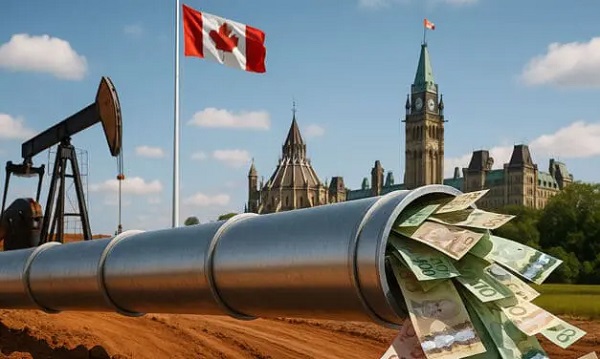
 Alberta2 days ago
Alberta2 days agoAlbertans need clarity on prime minister’s incoherent energy policy
-

 conflict12 hours ago
conflict12 hours ago“Evacuate”: Netanyahu Warns Tehran as Israel Expands Strikes on Iran’s Military Command
-

 Energy11 hours ago
Energy11 hours agoCould the G7 Summit in Alberta be a historic moment for Canadian energy?
-

 Crime2 days ago
Crime2 days agoManhunt on for suspect in shooting deaths of Minnesota House speaker, husband
-

 Alberta1 day ago
Alberta1 day agoAlberta’s grand bargain with Canada includes a new pipeline to Prince Rupert






